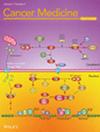Clinical Characteristics, Prognostic Factors and Therapeutic Strategies in Gastric Cancer Patients With Bone Metastasis: A Retrospective Analysis
Abstract
Background
Bone metastases are highly refractory and are associated with extremely poor survival. Despite the increasing incidence of bone metastasis in gastric cancer (GC), comprehensive analyses regarding the clinicopathological features, prognosis, and treatment of bone-metastatic GC remain limited.
Methods
We obtained data from 120 bone-metastatic GC patients from Nanjing Drum Tower Hospital and 36,139 GC patients from the SEER database. Chi-square and Mann–Whitney U-tests evaluated clinicopathological features, while Cox models identified prognostic factors. Kaplan–Meier curves and forest plots assessed the effects of different treatment strategies on overall survival after bone metastasis (OS-BM).
Results
Among 120 bone-metastatic GC patients, 55 (45.83%) were diagnosed with poorly cohesive gastric carcinoma (PCC). The higher incidence of bone metastasis was also observed in SRCC patients from the SEER database (p < 0.0001). PCC patients exhibited distinct pathological features compared to non-PCC patients, including lower PD-L1 (p = 0.042) and E-cadherin expression (p = 0.049). Multivariate analysis identified various negative prognostic factors such as metachronous bone metastasis (p < 0.001, HR = 2.35, 95% CI:1.47–3.74) and CA125 expression (p = 0.036, HR = 1.60, 95% CI:1.03–2.48), whereas immunotherapy was a positive prognostic factor (p < 0.001, HR = 0.44, 95% CI:0.29–0.66). Subgroup analysis also showed improved survival among different populations of bone-metastatic GC patients receiving immunotherapy. Moreover, combinational therapies including immunotherapy and other treatments (anti-angiogenic therapy and/or local radiotherapy) further improved patient OS-BM.
Conclusion
Our results suggest bone-metastatic GC patients exhibit distinct clinicopathological features, with a high incidence of bone metastasis in PCC. Immunotherapy-based combination therapies offer improved survival benefits, thus supporting the application of immunotherapy in GC patients at high risk of bone metastasis.


 求助内容:
求助内容: 应助结果提醒方式:
应助结果提醒方式:


